Tripatini
the world's smartest travel social network
Top Tips for Beach Safety in Costa Rica
There’s nothing better than a day at the beach. The sun, the surf … what could be more fun? Especially in Costa Rica, where the sun, sand and sea are warm all the time!
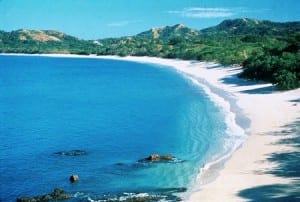 Long beaches of gold, rich black, pearly white, beige and even pink sand, fringed with palm trees and other greenery – Costa Rica’s beaches are paradise! It seems like every surfer who visits Costa Rica agrees it is one of the best places to surf. Not by chance is the country the third most popular destination for surfing after Hawaii and Indonesia. The reasons are simple: beaches with excellent year-round waves, balmy weather, warm water, friendly people and reasonable prices. The country also is one of the few in the world where two oceans are within an 8-hour drive of each other.
Long beaches of gold, rich black, pearly white, beige and even pink sand, fringed with palm trees and other greenery – Costa Rica’s beaches are paradise! It seems like every surfer who visits Costa Rica agrees it is one of the best places to surf. Not by chance is the country the third most popular destination for surfing after Hawaii and Indonesia. The reasons are simple: beaches with excellent year-round waves, balmy weather, warm water, friendly people and reasonable prices. The country also is one of the few in the world where two oceans are within an 8-hour drive of each other.
However, every environment has its cautions. The sun is strong and the ocean is powerful and unpredictable, but being smart and following preventative measures, you can have a fun and safe time on Costa Rica’s beaches.
Following are our Top Beach Safety Tips. Make sure to see the Rip Currents section at the end – it just may save your life.
Top Costa Rica Beach Safety Tips:
1. Go for the Sunscreen: The heat makes for a fun time at the beach, but Costa Rica is located just above the equator and our tropical sun is unexpectedly strong. Choose sunscreens with sun protection factor (SPF) of at least 15 or higher, are sweat and waterproof, and have titanium dioxide or zinc oxide. These ingredients block both ultraviolet-B (UVB) and ultraviolet-A (UVA) harmful rays, according to the Skin Cancer Foundation. Be sure to apply sunscreen 30 minutes before you head into the sun, and reapply every two hours, especially if you are sweating or swimming. Don’t forget special sunblock for your lips.
2. Cover Up: Soaking up the sun can be lovely, but you also have to know when to call it quits. Be sure to bring wide-brim hats, sunglasses and long-sleeved beach cover-ups with you. Wear foot protection so you don’t burn or cut your feet. Seek shade between the peak sun hours of 10 am and 2 pm.
 3. Hydrate, Hydrate, Hydrate: Our bodies are made up of about 60% water, and every system depends on water. Just one cute little water bottle isn’t going to be enough to keep you hydrated all day long. In Costa Rica’s tropical hot climate, you should be drinking 1 liter of water every hour. Avoid caffeinated beverages and alcohol. Fruits are an excellent source for water, such as watermelon which is 90% water. Oranges, tangerines, grapefruit, and melons are also strong contenders.
3. Hydrate, Hydrate, Hydrate: Our bodies are made up of about 60% water, and every system depends on water. Just one cute little water bottle isn’t going to be enough to keep you hydrated all day long. In Costa Rica’s tropical hot climate, you should be drinking 1 liter of water every hour. Avoid caffeinated beverages and alcohol. Fruits are an excellent source for water, such as watermelon which is 90% water. Oranges, tangerines, grapefruit, and melons are also strong contenders.
4. Stay Safe in the Water: Learn to swim and teach your children to swim.The ocean is powerful, and is not the same as swimming in a pool or a lake. Do not enter the ocean unless you know how to swim; be very cautious of dangerous surf and currents.
 5. Never Swim Alone: Safety in numbers. Always swim with a buddy, and tell others where you are going.
5. Never Swim Alone: Safety in numbers. Always swim with a buddy, and tell others where you are going.
6. Never Turn Your Back on the Ocean: Even the smallest wave can knock you over and cause injury, especially if you are caught by surprise. Always face forward and never turn your back on the ocean.
7. Shuffle Your Feet: Many beaches in Costa Rica have sting rays that like to settle in the warm sand in shallow water. Shuffle your feet when walking out into the ocean to scare any sting rays away and avoid stepping on them. If you do get “stung,” don’t panic and seek medical attention.
8. Learn about Rip Currents: See our important section below on how to get out of them and avoid them.
 9. Surf Safely: Surf or Boogie board in waves that match your level. Do not go out into surf that is “above or beyond” your capability. Seek professional surf instruction if you want to learn how to surf; Costa Rica has many surf schools to teach you proper, safe surf skills.
9. Surf Safely: Surf or Boogie board in waves that match your level. Do not go out into surf that is “above or beyond” your capability. Seek professional surf instruction if you want to learn how to surf; Costa Rica has many surf schools to teach you proper, safe surf skills.
10. Learn Cardiopulmonary Resuscitation (CPR): Emergencies can happen anywhere. Learning first aid and CPR skills could save someone’s life.
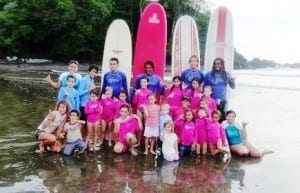 Del Mar Surfing Academy is one of the top surf schools in Costa Rica for teens (ages 13-19). Its sister company Del Mar Surf Camp runs surf vacations, yoga-surf retreats, and day surf lessons for adults. Del Mar Surfing Academy’s instructors lead safe surf and cultural/language immersion camps for teens in Costa Rica. They guarantee the highest quality surf lessons with a 2:1 student to teacher ratio for undivided attention and maximum safety. Native Costa Rican instructors all hold International Surfing Association training as surf instructors, plus water rescue and first aid/CPR certification. The company is registered and certified with the Costa Rican Tourism Board CANATUR and is insured with the national insurance company, INS. Local medical care and emergency transport is available in every location where Del Mar Surfing Academy operates. Del Mar Surfing Academy offers 7-night and 14-night surf camps for beginners up to advanced surfers on Costa Rica’s Central Pacific Coast and at award-winning Playa Santa Teresa on the Nicoya Peninsula.
Del Mar Surfing Academy is one of the top surf schools in Costa Rica for teens (ages 13-19). Its sister company Del Mar Surf Camp runs surf vacations, yoga-surf retreats, and day surf lessons for adults. Del Mar Surfing Academy’s instructors lead safe surf and cultural/language immersion camps for teens in Costa Rica. They guarantee the highest quality surf lessons with a 2:1 student to teacher ratio for undivided attention and maximum safety. Native Costa Rican instructors all hold International Surfing Association training as surf instructors, plus water rescue and first aid/CPR certification. The company is registered and certified with the Costa Rican Tourism Board CANATUR and is insured with the national insurance company, INS. Local medical care and emergency transport is available in every location where Del Mar Surfing Academy operates. Del Mar Surfing Academy offers 7-night and 14-night surf camps for beginners up to advanced surfers on Costa Rica’s Central Pacific Coast and at award-winning Playa Santa Teresa on the Nicoya Peninsula.
RIP CURRENTS – What you Need to Know
Costa Rica is famous for its long sandy beaches. At first glance they are enticing and peaceful, but sometimes looks can be deceiving. The following information is to make you aware, not afraid, of beaches in Costa Rica. Beaches are living dynamic places; never do they stay the same.
Information is courtesy of Say Leon Gamboa, Director of Emergency Care Costa Rica, a first aid and CPR-AED course education center, internationally certified by the U.S. National Safety Council.
Why Rip Currents Form: As waves travel from deep to shallow water, they will break near the shoreline. When waves break strongly in some locations and weakly in others, this can cause circulation disturbances which are seen as rip currents: narrow, fast-moving belts of water traveling offshore. Rip currents can occur at any surf beach with breaking waves.
Why Rip Currents are Dangerous: Rip currents are the leading water hazard for all beachgoers. They are particularly dangerous for weak or non-swimmers. Rip current speeds are typically 1-2 kph (0.6-1.2 mph). However, speeds as high as 8 kph (5 mph) have been measured. Thus, rip currents can sweep even the strongest swimmer out to sea. The strength and speed of a rip current will likely increase as wave height and wave period increase. They are most likely to be dangerous during high surf conditions, as the wave height and wave period increase.
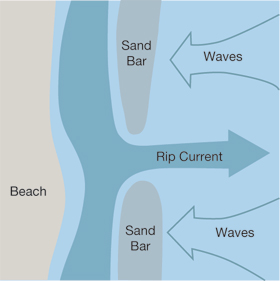 Where Rip Currents Form: Rip currents most typically form at low spots or breaks in sandbars, where rivers or estuaries enter the sea, and also near structures such as jetties and piers. Rip currents can be very narrow or extend in widths to hundreds of yards (meters). The seaward pull of rip currents varies – sometimes the rip current ends just beyond the line of breaking waves, but sometimes rip currents continue to push hundreds of yards (meters) offshore.
Where Rip Currents Form: Rip currents most typically form at low spots or breaks in sandbars, where rivers or estuaries enter the sea, and also near structures such as jetties and piers. Rip currents can be very narrow or extend in widths to hundreds of yards (meters). The seaward pull of rip currents varies – sometimes the rip current ends just beyond the line of breaking waves, but sometimes rip currents continue to push hundreds of yards (meters) offshore.
How to Identify Rip Currents: Rip currents are often not easily identifiable to the average beachgoer. Polarized sunglasses make it easier to see rip current clues. Look for any of these clues:
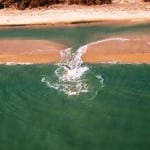 A channel of churning, choppy water moving out to sea.
A channel of churning, choppy water moving out to sea.- An area having a notable difference in water color, usually due to swirling sediment from the beach.
- A line of foam, seaweed, or debris moving steadily seaward.
- A disturbance in the wave line coming in to shore.
Rip Current Avoidance: Ask locals at the beach you are visiting if there are dangerous or strong currents; many times locals remember the last time the ocean took someone. Look for choppy water, usually brown; as the tide moves up and down it will create a drag, turning the water brown. Enter the water slowly, feeling for any pull of currents out to sea. When in doubt, only go in the water up to your knees and be careful of incoming waves that could knock you down. Remember that when the tide is low, it is pulling the strongest out to sea. Never go in the ocean alone.
What to do if you get caught in a Rip Current:
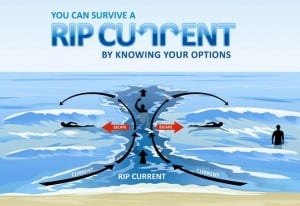 Stay calm. Don’t panic. Don’t fight with Nature, you will lose. Conserve your energy.
Stay calm. Don’t panic. Don’t fight with Nature, you will lose. Conserve your energy.- Do not try to swim to shore in a straight line. Rip currents work in a circular motion so the current will eventually pull you back out.
- You can swim parallel to the beach to get out of the current. Or, float and let it take you out. The force of the current lessens as it goes out to sea. When the current diminishes, swim parallel to the beach or at a 45-degree angle, until you feel free of the current and can swim back to shore – even if it is a different place than where you originally were. Better to walk back on sand than fight currents.
- If you cannot get back to shore, just float and tread water, and wave your arms to attract someone’s attention on shore for help. Do not panic or waste your energy.
- If you are going to help anyone in the ocean, bring something that floats. Do not go alone. A surf board is a great rescue tool, and rip currents are your friends on a board since the force takes you past the breaking waves faster than trying to paddle out yourself.
Find more information on rip currents at the Costa Rica National Tourism Board.
Videos
Groups
-
India
173 members
-
Tour Operators
873 members
-
Ireland
93 members
-
South Dakota
17 members
-
Azerbaijan
17 members
-
Shopping the World
55 members
-
Tech for Travel/Hospital…
87 members
-
Andorra
26 members
-
Online Corner
75 members
-
Minnesota
22 members
-
Backpackers & Hostels
84 members
-
Portugal
60 members
-
Turks and Caicos
26 members
-
Agritourism/Farmstays
72 members
-
Zambia
21 members
© 2025 Created by EnLinea Media.
Powered by
![]()
Badges | Report an Issue | Privacy Policy | Terms of Service

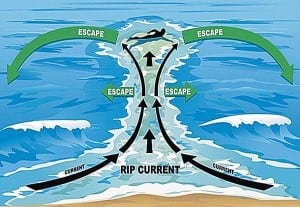
You need to be a member of Tripatini to add comments!
Join Tripatini